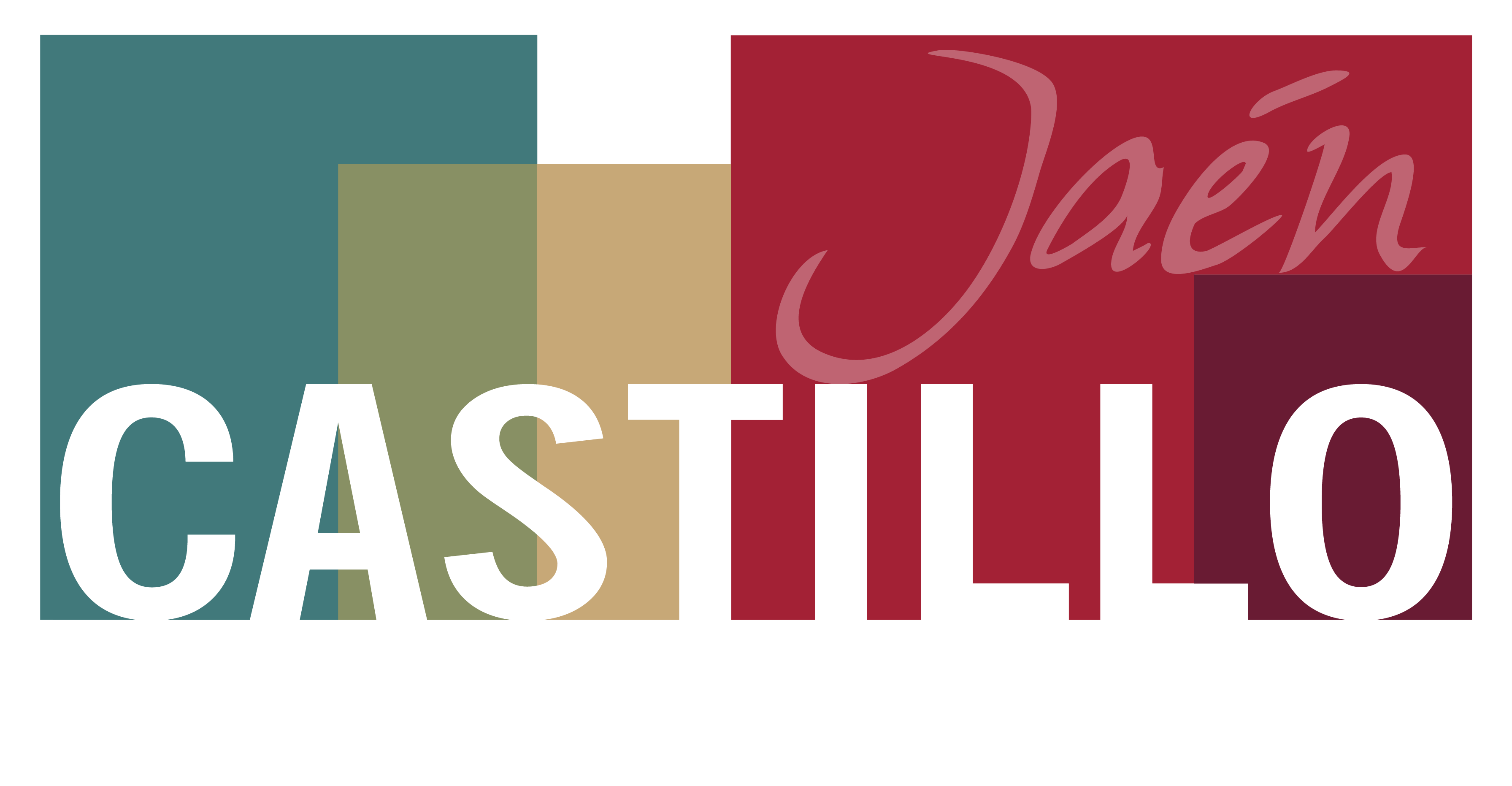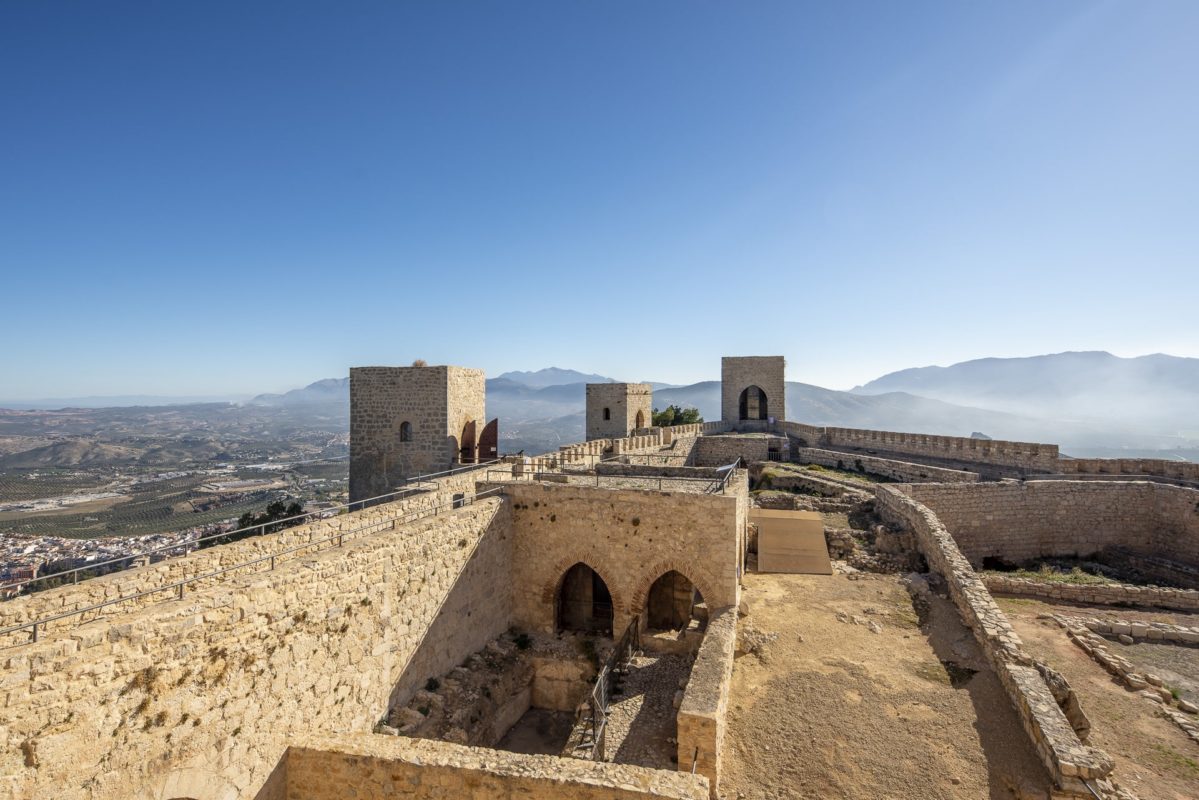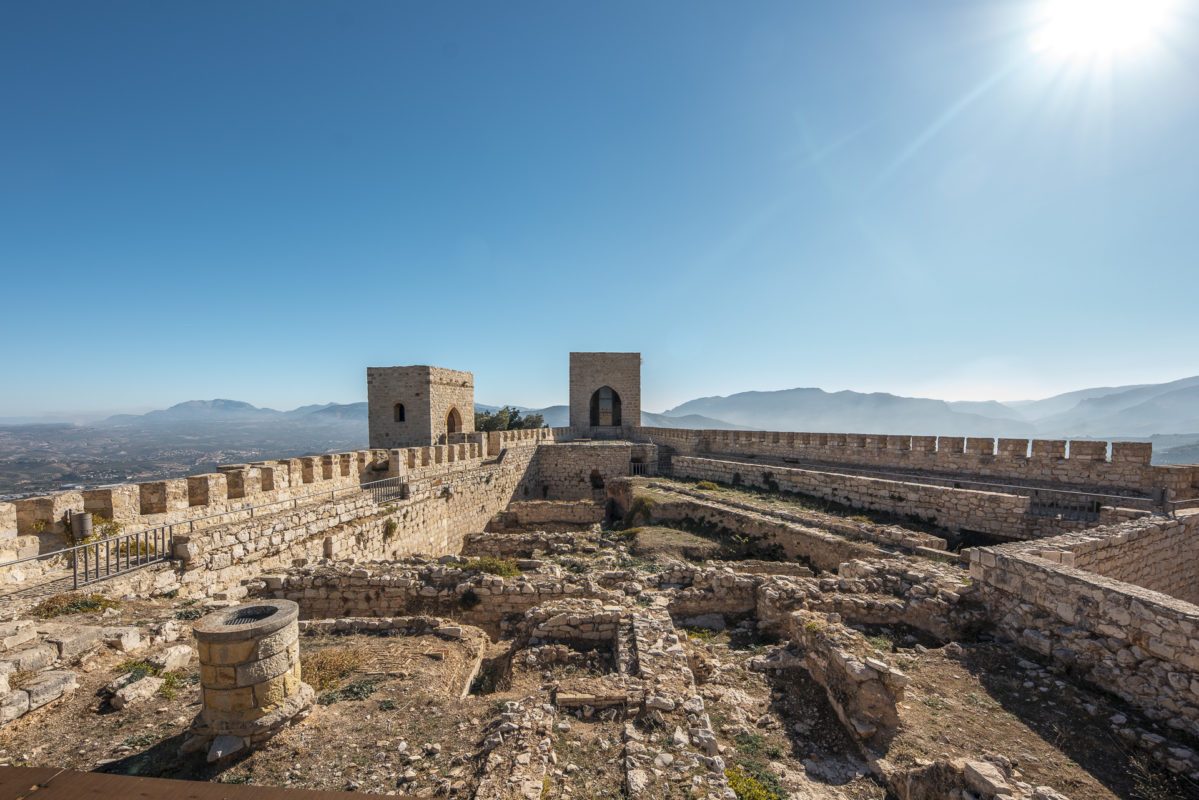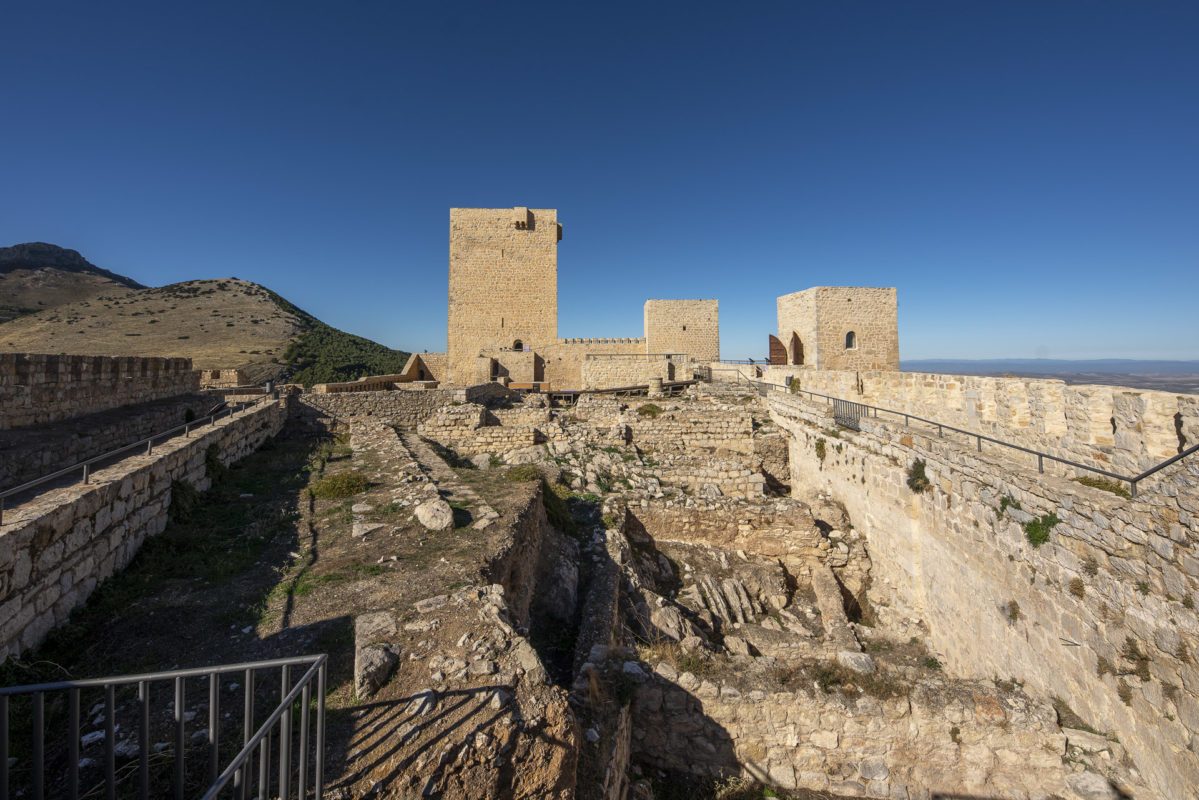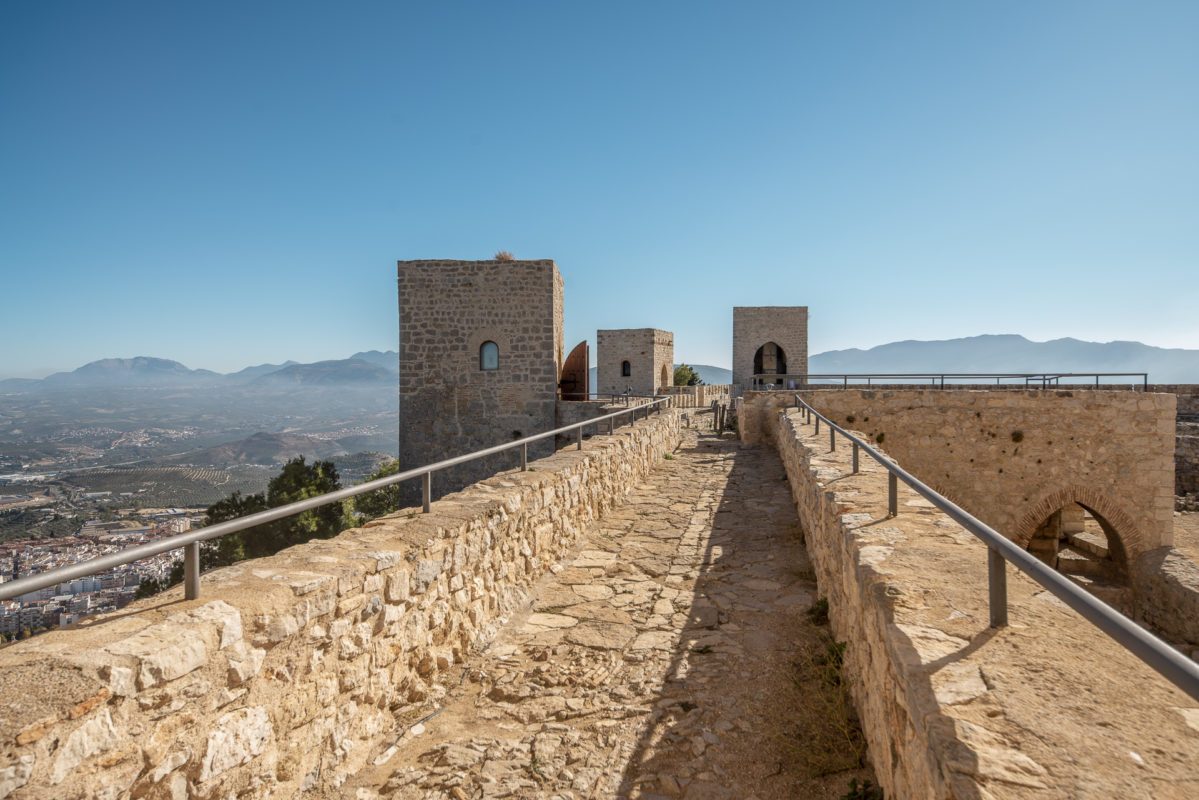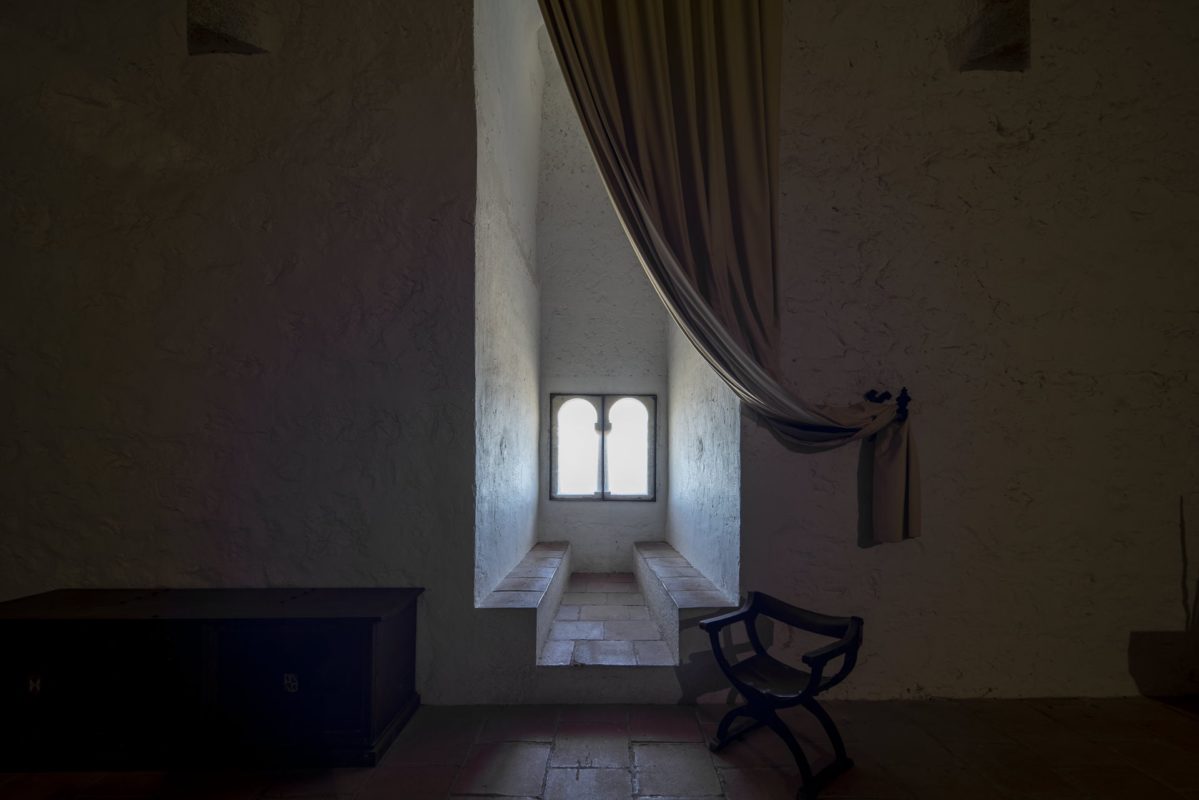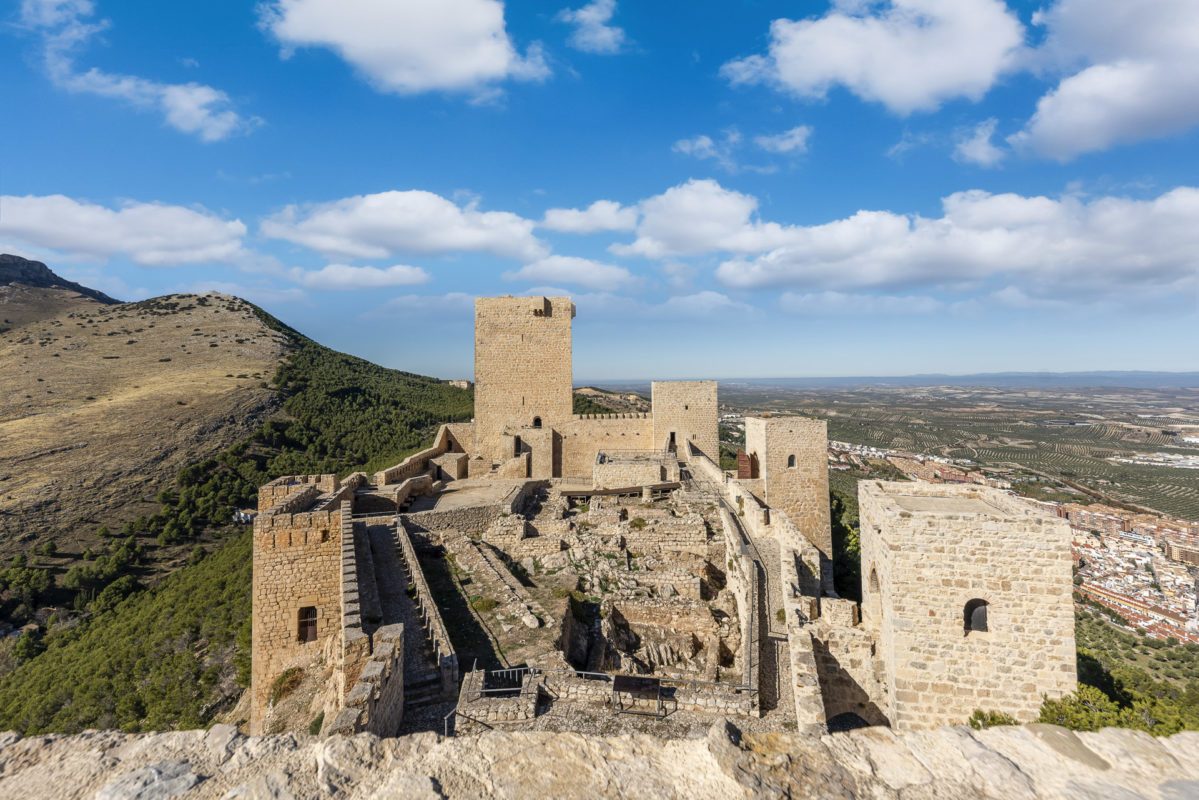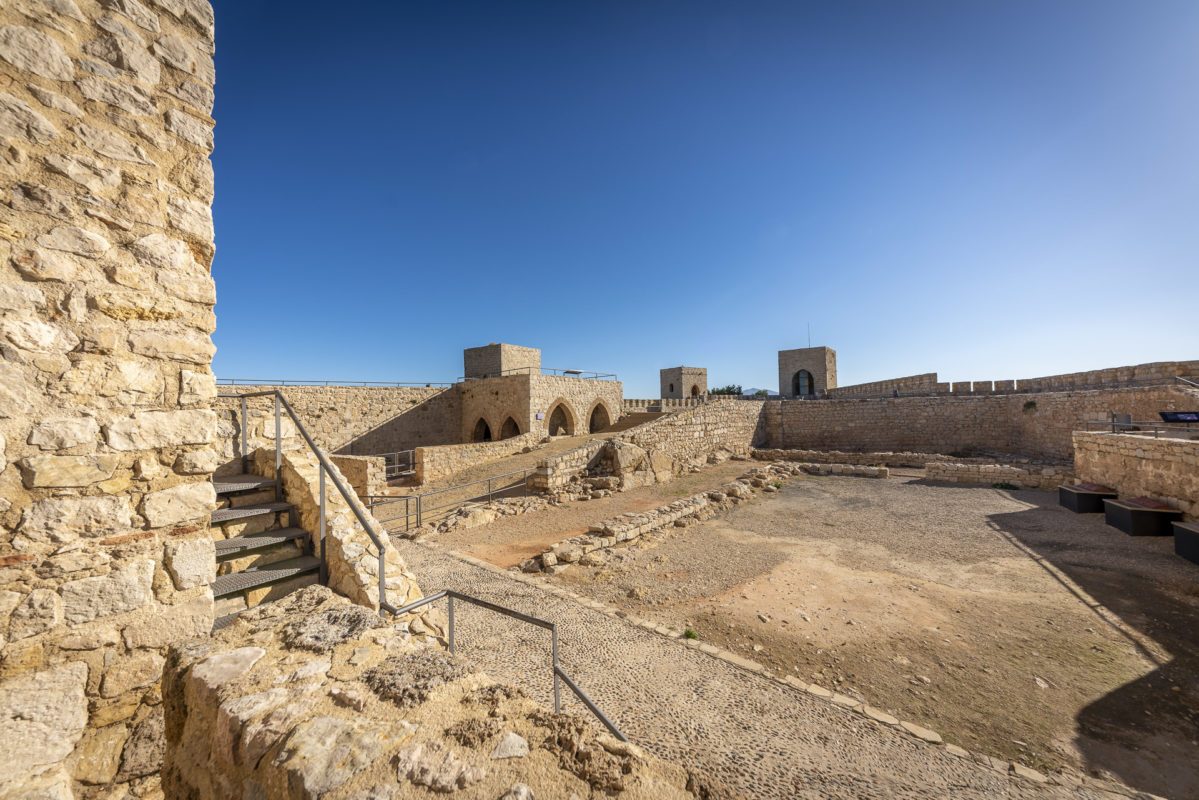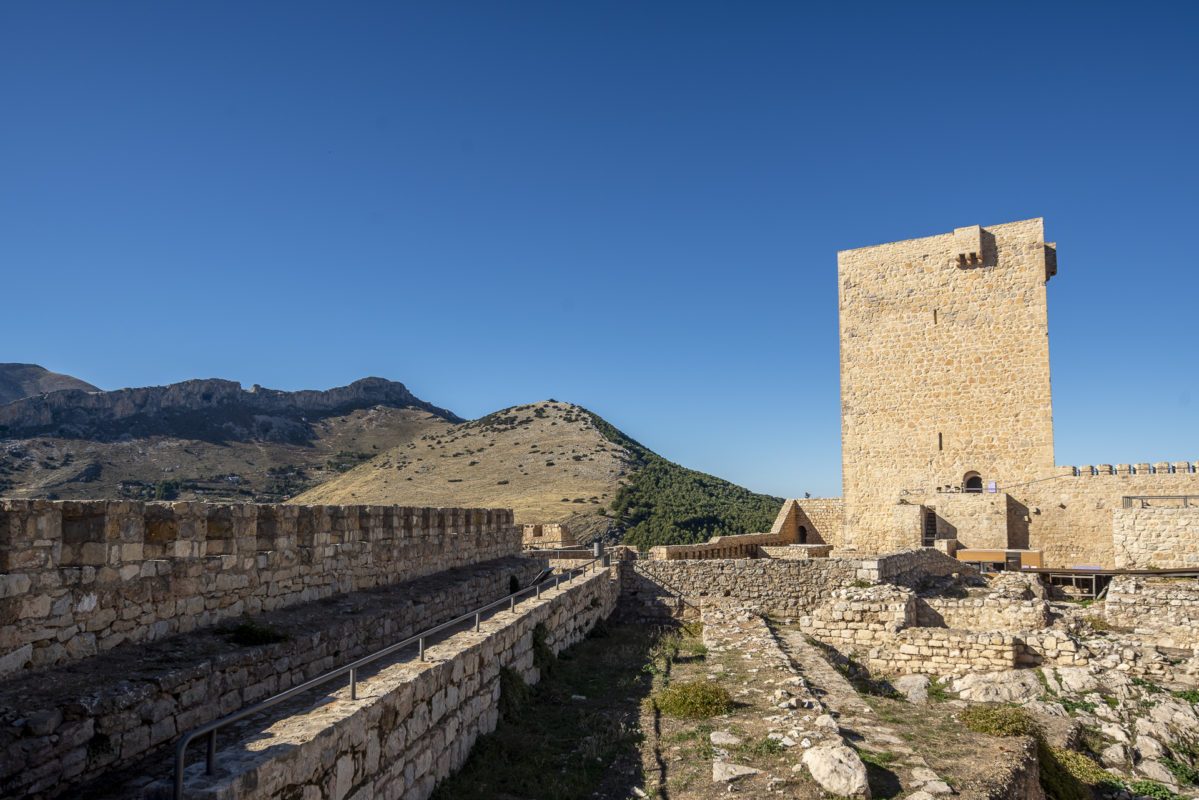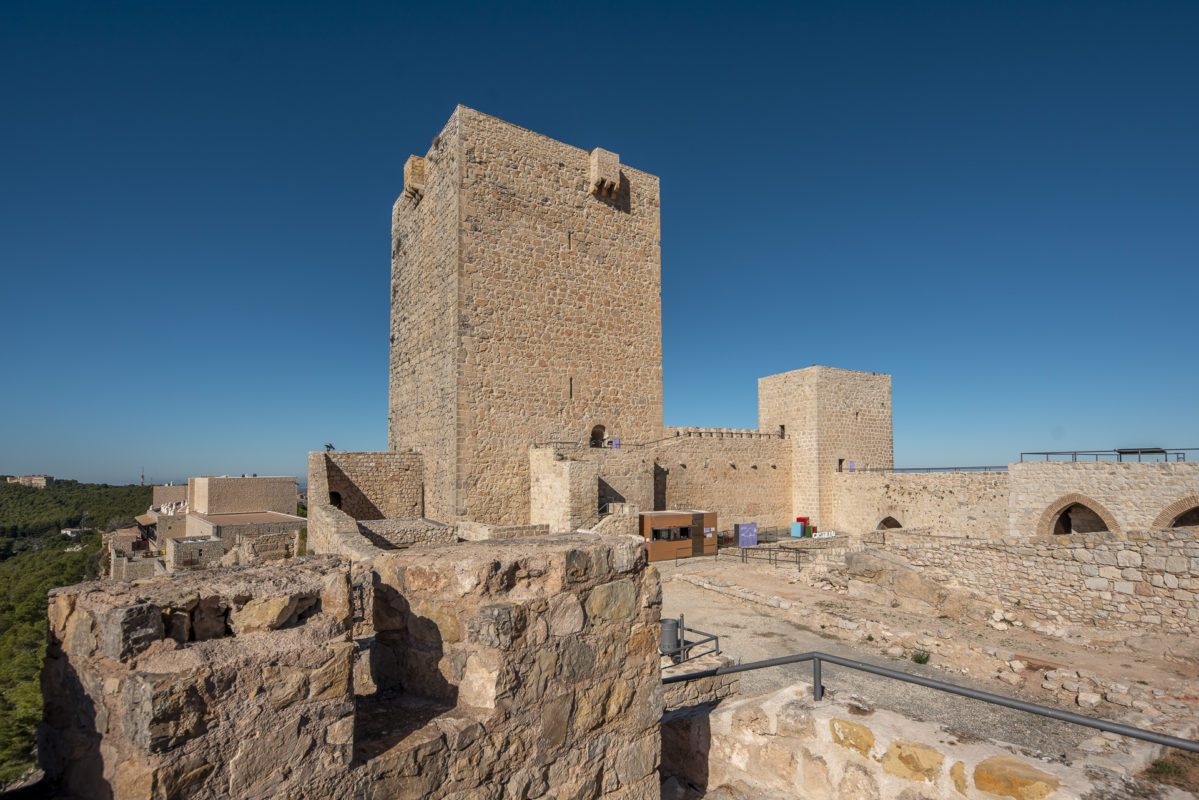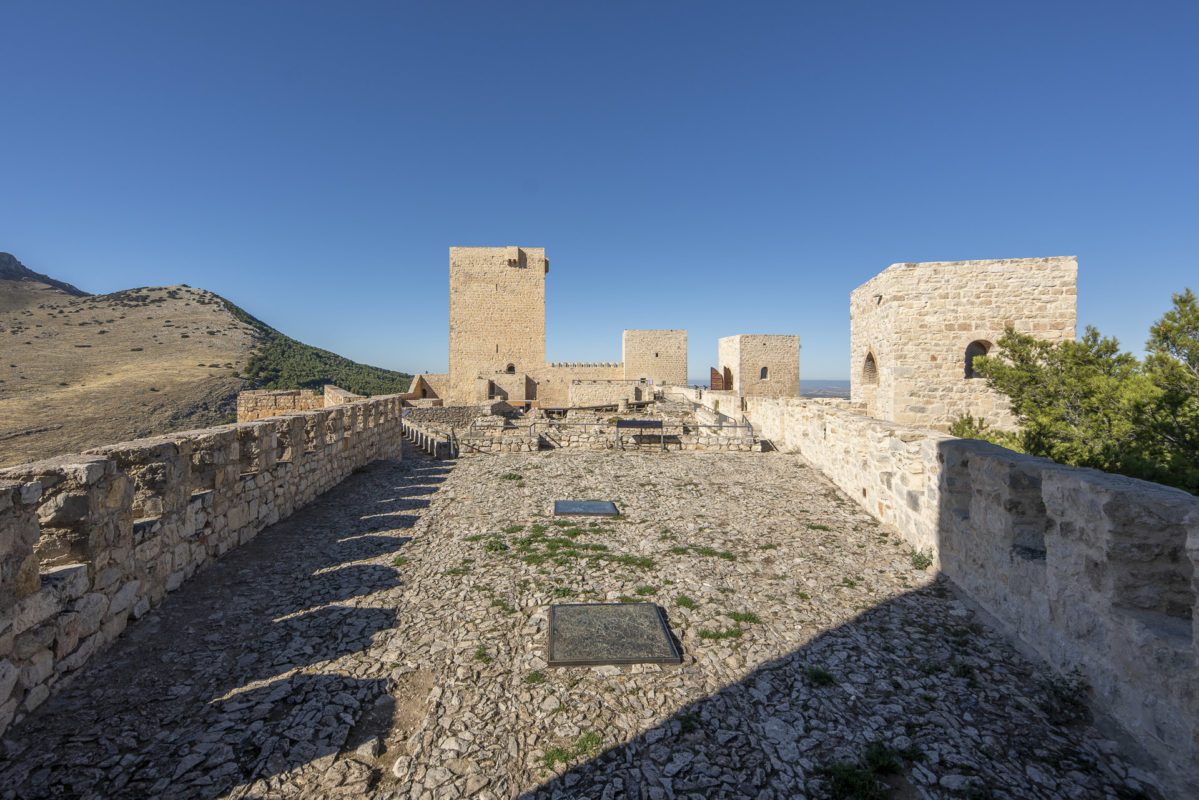THE CASTLE AND ITS HISTORY
“On the summit of Santa Catalina Hill was erected already in the IXth century an old fortress…”
History
Santa Catalina Castle’s strategic advantage is clear. It was built on Santa Catalina Hill, you can see almost the whole territory of the province from up ther: towards the north and west the countryside and Sierra Morena, a fertile territory along the valley of the Guadalquivir river, a place full of olive groves; to the south is Sierra Sur of Jaén and the two peri-urban parks, Santa Catalina and Monte la Sierra; and towards the east is Sierra Magina Natural park, a territory linked for centuries to the border of Granada’s Kingdom.
Santa Catalina Castle which dominates the skyline of the city, is a triangle- shaped castellated building with five square towers and one pentagonal flanking the corners.
Enter and learn about Jaén’s history, its origins to the present day and its connection with its territory.
First constructions and the Muslim period
The first settlers of Santa Catalina hill were the Iberian people (back in the 4th century b.c.) who built an oppidum (walled town) of which archaelogical remains are still preserved at the foot of the castle, on the northern hillside. Romans and later Arabs superseded these ancient structures to build their fortresses.
The first fortress to be built on the hill after the Iberian period was carried out by Muslims during 8th and 9th centuries, a period in which a citadel was built on the middle of the hillside. This citadel with administrative and defensive functions was superseded on top of the hill by a great fortress from Xth century onwards.
Christian era
After the conquest of the city by the Christians, the Islamic walls were enhenced by Ferdinand III, who began the construction of a new fortress on the highest part of the old Muslim fortress. This smaller but defensively more powerful fortress was known by the Christians as the New Alcazar (New fortress). The castle’s works began in the middle of the XIII century and they continued for many years and over the centuries; rooms and fortifications were added, also during the reign of Alfonso X and Fernando IV and later. Thus, in the whole medieval Christian period, there were three fortifications on the top of the hill: The New Alcazar (New Fortress), known as Alcazar Viejo (Old Fortress) (with the remains of the old Islamic fortification) and a fortified area also from the Muslim period known as Abrehui Castle. During the 15th century, the New Alcazar or Santa Catalina Castle, became home to the Constable of Castile Miguel Lucas de Iranzo and his family for short periods of time.The War of the Indepence
During this period the fortress has undergone the most important modifications throughout its history.
They took place between January 1810 and September 1812 when the Napoleonic army modified the fortress and turned it into the largest and most important base of the French army in the High Guadalquivir area. Therefore a great number of works were carried out, refurbished and strenghtened it and in many cases changed the previous structures. When the French troops withdrew from Jaén, they blew a large part of the buildings up, damaging seriously some parts of the fortress.
